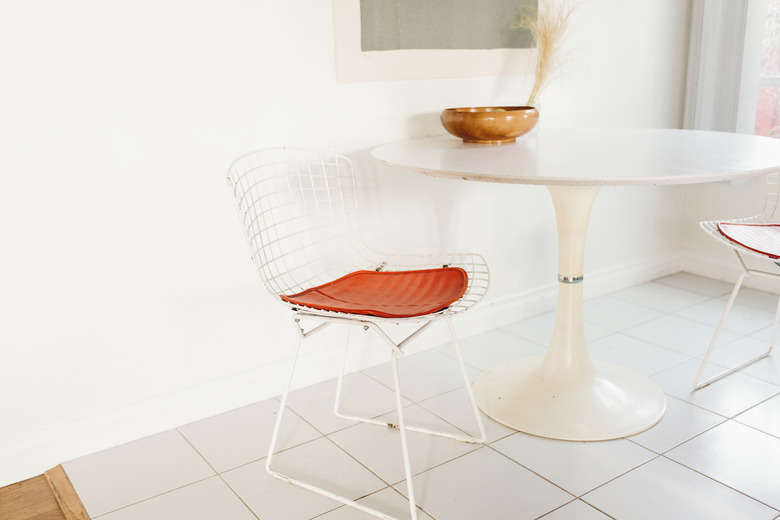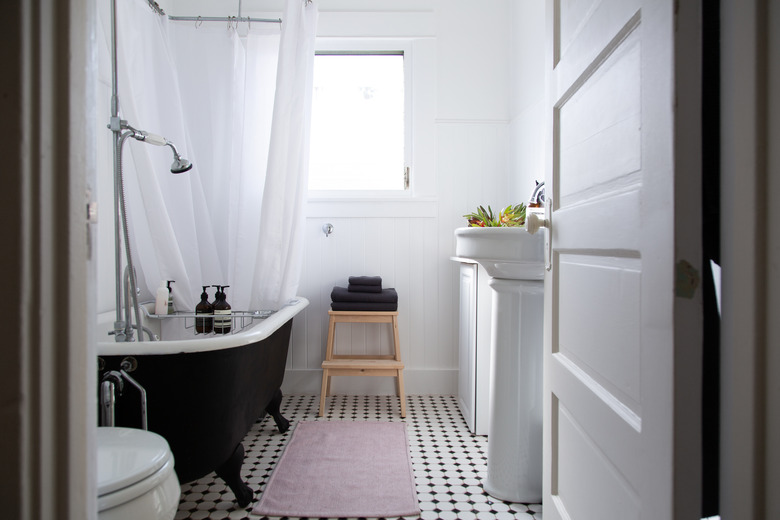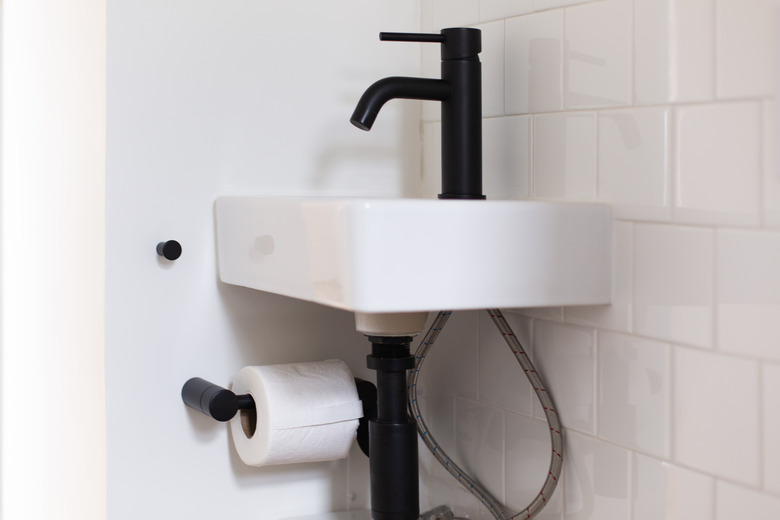Cement Backer Board: What You Need To Know
Cement backer board is the most commonly used underlayment for porcelain and ceramic tile, and these are some of the reasons:
- It's water resistant.
- It provides a smooth, flat surface with good adhesion properties.
- It's relatively inexpensive.
- It adds rigidity to the tile substrate, which is essential to prevent cracking of the grout and the tiles themselves.
Cement board came on the scene around 1970, according to professional tile setter John Bridge. A combination of Portland cement sandwiched between layers of fiberglass mesh, it offered an alternative to such practices as laying a mortar bed, which is a demanding task that requires skill, and to laying tiles on plywood or drywall, which are materials that are too flexible to prevent damage to the grout and tiles.
Cement board isn't the only tile underlayment available for a tile installation, and it isn't always the best choice, but if you're planning a tile job, you need to know about it because it's the one you're most likely to use.
What Is Cement Backer Board?
What Is Cement Backer Board?
You'll find cement backer board in the building materials section of any hardware or home supply store. Brands include WonderBoard, Durock, PermaBase and HardieBacker, and you don't have to worry about choosing the wrong brand because with a few small differences, they are all basically equivalent. Cement board comes in 3 x 5-foot sheets, which are smaller than plywood sheets primarily because cement board is so heavy that 4 x 8-foot sheets would be unmanageable. It's generally available in 1/4- and 1/2-inch thicknesses.
The weight of cement board is a major issue when you have to carry sheets up stairs, so it's good to know that some brands are lighter than others. A sheet of 1/2-inch WonderBoard, which is the heaviest product, weighs 45 pounds, while the lighter Durock tips the scale at 36 pounds. HardieBacker, which unlike the other products is a nonaggregate material, weighs 39 pounds.
One of the advantages of the nonaggregate construction of HardieBacker is that it's easier and less messy to cut than purely cementitious products. It's akin to the fiber cement board the James Hardie company uses to make siding, which contains wood fibers. The fibers make the product slightly more brittle, but despite this drawback, HardieBacker is one of the top choices of builders and tile installers.
Where to Use Cement Board
Where to Use Cement Board
Tile installers use cement backer board when installing tiles on walls, countertops and floors. It has replaced water-resistant drywall, also known as greenboard, as the substrate of choice for installing wall tiles in wet locations, such as bathrooms. It isn't completely waterproof, so you still need to install a moisture barrier behind it, but it isn't nearly as susceptible to moisture damage as drywall.
You generally use 1/2-inch cement board when installing wall tiles, but when installing on a countertop or floor, both 1/4- and 1/2-inch sheets are acceptable, depending on the stability of the countertop or subfloor. The thicker material adds extra height, so if the subfloor or countertop is rock solid, it's usually preferable to go with the thinner backer material.
How to Cut Cement Board
How to Cut Cement Board
You can cut cement board by scoring it with a knife in much the same way that you cut drywall. Draw a cutting line with a pencil, lay a straightedge along the line to guide your knife, and score the material deeply with a utility knife. It might help to make two passes. Break the sheet along the scored line, then cut through the backside of the material to complete the cut. Cutting through the Portland cement and fiberglass that constitutes cement board is hard on a knife blade, so you'll probably need to replace it frequently, or you could do what pros do and buy a carbide-tipped scoring tool.
You can also cut cement board with a circular saw, but beware. The saw will raise so much dust that it will obscure your progress and cover everything on the job site, and you'll need to wear goggles and a respirator to protect yourself from it even if you're cutting HardieBacker. A good way to minimize dust is to use a saw blade with as few teeth as possible; a six-tooth blade is ideal.
The best way to cut straight and curved notches and large holes is to use a jigsaw. To keep dust down, you can use a metal-cutting blade, but it will wear out after only a few cuts, so a better option is to use a carbide-grit blade.
How to Install Cement Board on a Wall
How to Install Cement Board on a Wall
You can install cement board as a tile backer board for walls or floors. Cement board isn't completely impervious to moisture, so you should staple sheet plastic to the studs before installing cement board on a wall. When you're using it as an underlayment for floor tile, you should anchor it in fresh thinset mortar.
Building supply outlets that stock cement board also sell screws designed specifically for fastening it, and you should use them. They are 1 1/4-inches long and are coated with a corrosion-resistant material, and they feature a flat head with flutes that cut into the material to ensure the head sinks flush to the material. If you can't find these screws, you can use 1 1/2-inch galvanized roofing nails.
After checking that all the studs are straight and adding blocking as needed for reinforcement, you screw the sheets to the studs in the same way you would if you were hanging drywall. Space the fasteners about 6 inches apart and keep them at least 1 inch from the edges to avoid chip-out. After the sheets are installed, lay fiberglass mesh tape on the seams and cover the tape with a coat of thinset using a trowel.
Thinset Mortar – Tile Floor
Thinset Mortar
–
Tile Floor
The purpose of embedding cement backer board in thinset mortar when you install it on a floor is partially to bond it, but it's mostly to provide a super-flat surface, which is vital for preventing cracked grout and tiles. The best thinset is one that contains a latex additive to keep it flexible. For its part, the floor must be stable and flex-free, and achieving this may involve reinforcing the subfloor and, in some cases, the floor joists.
Mix enough thinset to last you no more than 30 minutes to avoid having it harden before you can use it. Spread it on the floor with a trowel, being careful to fill low areas. Lay the sheets in the mortar while it's fresh and screw them to the subfloor with cement board fasteners. When laying the sheets, keep a minimum distance of 2 inches between the seams of cement board and those of the plywood subfloor.
When you've finished fastening the sheets and the mortar has had a chance to set, tape the seams with fiberglass tape and a coat of thinset mortar. Scrape the seams with a trowel to ensure you leave a completely flat surface for the tile installation.


